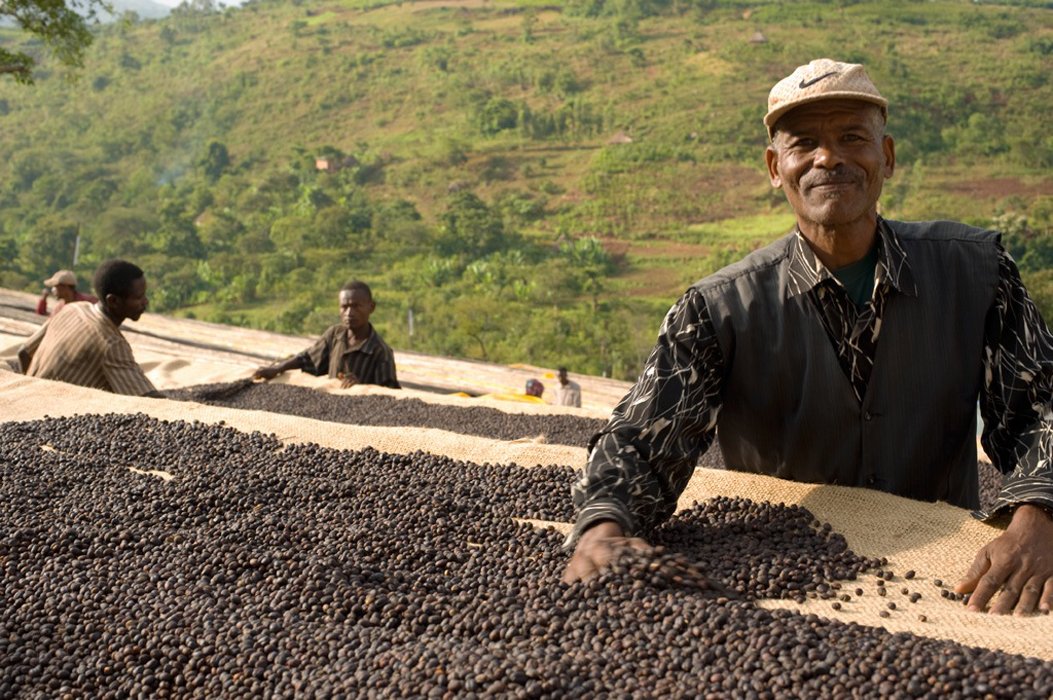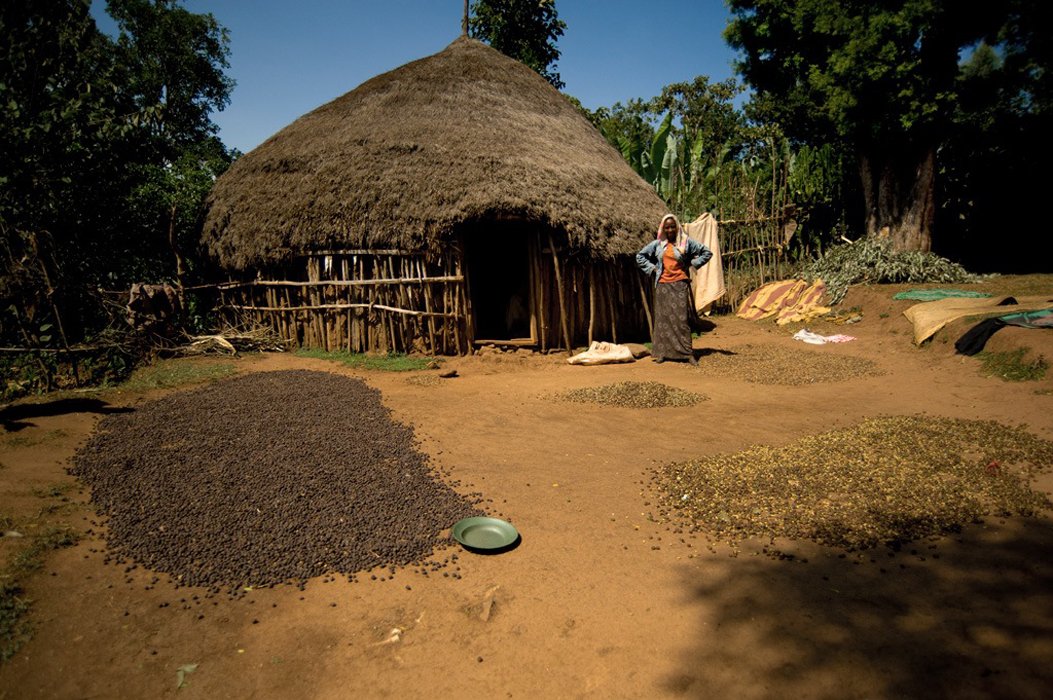Natural or dry coffee processing is one of the oldest methods of processing coffees. Once the cherries are picked from the tress, they’re cleaned then spread out in the sun to dry on cement or raised tables. They’re left in the sun for weeks and are frequently raked and turned throughout the day to ensure an even drying process and to prevent mildew growth.
Natural processing — as opposed to washed processing — is popular in regions that have very little rainfall, little access to water, and long periods of sunshine. Many coffees from Indonesia, Brazil, Yemen, and Ethiopia are dry processed.

As the cherries dry, they darken in color and harden. Once they’ve reach an appropriate dryness they are sent to a mill where they can be hulled, sorted, graded and bagged for storage ond/or shipment.
Coffees that have been processed naturally are often sweeter and have more body and a more complex flavor and aroma profile. This is most likely a cause of the fermentation process.
Natural coffees display an uneven browness once roasted. This too is likely attributable to the fermentation process happening largely within the individual cherries as opposed to homogenously within a washing tank.

Believe it or not, the processing method (dry, wet, or pulped, etc) is one of the single most important factors in a coffee’s flavor, second only to picking appropriately-ripe cherries. There are still debates about which process is best and countries like Brazil are moving aggressively to modernize and automate as much as possible. What effects that modernization has on the flavor and quality of the coffee remains to be seen.
